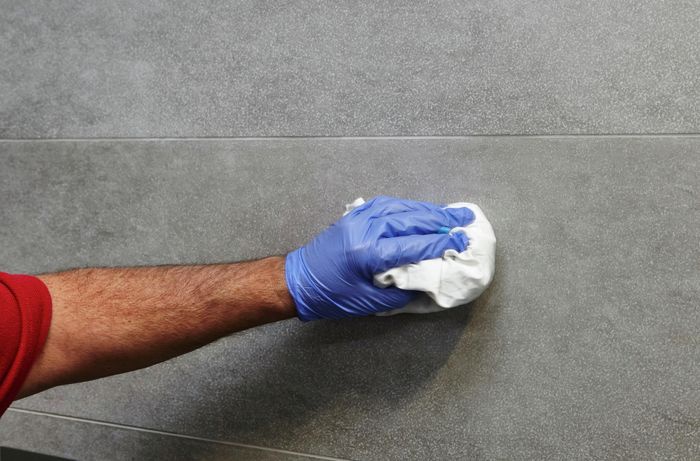Tiles are a popular choice for flooring, backsplashes, and even walls due to their durability and aesthetic appeal. However, to maintain their beauty and functionality, proper maintenance is essential. One crucial aspect of tile maintenance is sealing. In this article, we'll explore expert advice and recommendations for sealing tiles effectively.
Understanding Tile Sealing
What is tile sealing?
Tile sealing involves applying a protective layer to the surface of tiles to prevent water, stains, and other substances from penetrating the material.
Why is it necessary?
Unsealed tiles are susceptible to damage from spills, moisture, and dirt, leading to stains, discoloration, and deterioration over time. Sealing helps maintain the integrity and appearance of the tiles.
Choosing the right sealer:
Selecting the appropriate sealer for your tiles is crucial for effective sealing. For porous materials like natural stone, a penetrating sealer such as a solvent-based impregnating sealer or a water-based penetrating sealer is recommended. These sealers are designed to penetrate the pores of the stone, creating a barrier against stains and moisture without altering the natural appearance of the tiles. For non-porous tiles such as porcelain and ceramic, a topical sealer such as a water-based acrylic or epoxy sealer can be used to create a protective barrier on the surface. Ensure to read the manufacturer's instructions and choose a sealer specifically formulated for your tile material.
Joint sealing:
In addition to sealing the tiles themselves, it's essential to joint sealing between the tiles to prevent water penetration and protect the underlying substrate. For this purpose, a flexible, waterproof grout sealer is recommended. This type of sealer helps to prevent moisture from seeping into the grout lines, reducing the risk of mold and mildew growth and prolonging the lifespan of the grout. Apply the grout sealer carefully along the grout lines using a brush or applicator, ensuring thorough coverage and allowing it to dry completely before using the tiled area.

Types of Tiles That Need Sealing
Some common types of tiles that require sealing include porcelain, ceramic, and natural stone tiles. Each material has its own characteristics and vulnerabilities that make sealing essential for long-term preservation.
Benefits of Proper Tile Sealing
Properly sealed tiles offer several benefits, including protection against stains, increased longevity, and enhanced aesthetics. The sealer acts as a barrier, repelling liquids and contaminants, thereby prolonging the life of the tiles.
Preparation Before Sealing
Before sealing tiles, thorough preparation is crucial. This involves cleaning the tiles to remove any dirt, grime, or existing sealant residues. Additionally, ensure that the tiles are completely dry before applying the sealer. Choosing the right type of sealer for your specific tile material is also essential for optimal results.
Step-by-Step Guide to Sealing Tiles
- Surface preparation:
- Clean the tiles using a suitable cleaner and allow them to dry completely.
- Applying the sealer:
Using a brush, roller, or sprayer, apply the sealer evenly to the surface of the tiles, ensuring full coverage. - Buffing and drying:
After applying the sealer, buff the tiles with a clean cloth to remove any excess product. Allow the sealer to dry thoroughly before exposing the tiles to moisture.
Maintenance Tips After Sealing
Once the tiles are sealed, proper maintenance is key to preserving the seal and ensuring long-lasting protection. This includes regular cleaning with mild detergents, avoiding harsh chemicals that can degrade the sealer, and periodic resealing to maintain optimal performance.
Common Mistakes to Avoid
To achieve the best results when sealing tiles, avoid common mistakes such as skipping surface preparation, over-application of sealer, and using the wrong type of sealer for the tile material. These mistakes can compromise the effectiveness of the sealing process and diminish its benefits.
FAQs
How often should I seal my tiles?
The frequency of sealing depends on factors such as tile material, usage, and exposure to moisture. As a general rule, it's recommended to reseal tiles every 1-3 years.
Can I seal over existing sealant?
It's not advisable to seal over existing sealant without proper surface preparation, as this can result in uneven application and reduced effectiveness.
Is it necessary to seal grout?
Yes, sealing grout is essential to protect it from stains, moisture, and mold growth. It also helps prolong the life of the grout and maintain its appearance.
Can I seal outdoor tiles?
Yes, outdoor tiles can be sealed to protect them from the elements and enhance their durability. Choose a sealer specifically designed for outdoor use.
How long does tile sealer last?
The longevity of tile sealer varies depending on factors such as tile material, usage, and maintenance. In general, most sealers last 1-3 years before requiring reapplication.
Conclusion
Sealing tiles is a crucial step in preserving their beauty and functionality. By following expert advice and recommendations, you can ensure proper sealing and enjoy the benefits of durable, stain-resistant tiles for years to come.


No comments yet